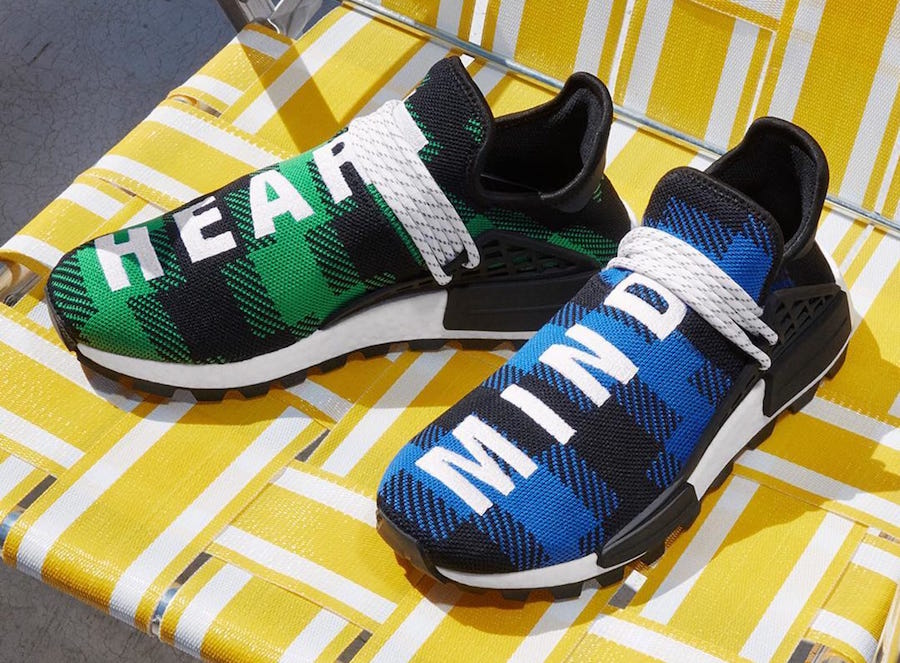
Written by Zim Ahmadi
This Opinion Editorial is of the author’s own thoughts and doesn’t necessarily reflect the stance of Masses as a whole.
Source: Pixar-Planet.FR. Anton Ego, ruthless food critic from Ratatouille
In the age of clicking heart-shapes, leaving ratings on your Airbnb or Grab, super-liking your match on Tinder; algorithms are created to predict what we would love. When everything’s automated, why do people even really “write” reviews anymore?
There are a lot of very obvious answers to this, of course. A simple 5-star rating doesn’t really tell you the ins and outs of that restaurant you’ve been meaning to visit. You sometimes need actual people for that. Let Random Raymond tell you whether the coffee they serve at the new abandoned warehouse in Bangsar is good.
Let Agonising Aisyah inform you of the blandness of certain banana leaf places. Reviews are guides for purchase, especially when you grow older and time doesn’t allow you to try everything on your own.
There’s a notion that some people have that it’s almost “nobler” to not listen to people’s opinions and just try things for yourself., but I don’t have the willpower or the free hours to watch every movie in the cinema to decide myself, Karen.
But more than just really elaborate explanations to a rating, reviews are important as mirrors of society’s values & preferences. They are essential to cultural preservation and the archiving of the arts. Because no art exists in a vacuum, it exists as part of a cycle of creation and reaction.
Sounds pretentious, maybe, but let me explain.
“The Critics Are Always Wrong”
Since I’m more of a music guy, this article would lean more towards the importance of music criticism, but you’ll find eventually that it applies to almost everything that succumbs to the subjective perceptions of mankind.
The biggest truth about critics is that we are always wrong. The more accurate version of this truth is that we are always wrong, unless you agree with us. Whatever your opinions of media criticism might be, it is an age-old truth that generally people hate us.

The stereotype, made popular in movies like Birdman or even Ratatouille, is that critics are heartless, arrogant, smartalecks who dampen the spirits of people who actually work hard to give something good for the world. This stereotype also carries on in real life, especially recently, with tweets from famous artists such as Ariana Grande & Lizzo, or famous quotes from people like Leonard Bernstein and Frank Zappa
“Definition of rock journalism: People who can’t write, doing interviews with people who can’t think, in order to prepare articles for people who can’t read.”
― Frank Zappa, The Real Frank Zappa Book
In some instances, critics are horrible people. The history of music criticism is filled with writers and naysayers who launch ad hominem attacks on the artist as opposed to the music, like the barrage of attacks on Malaysian rapper Altimet’s physical appearances, or just plain racists that deplored blues and jazz music as “devilish ‘negro’ rhythms (using words that I don’t think is necessary to type)”.
There are also plenty of music critics out there who don’t bring any value to the discussion, who haven’t done any research on the media they’re consuming, and hold as much weight as a random Facebook commenter (an inaccurate analogy considering there are plenty of social media users who actually do a lot of research and would have more knowledge than some “professional critics”).
To rule out all critics as ignorant haters though is probably not a good idea. There is value in the overall existence of a class of people who call themselves “critics”.
At risk of sounding like I’m writing a plea as to why I should keep my job, here’s some big reasons why media criticism is essential to any society, including Malaysia.
“Wisdom of the Crowds”
Some of the most annoying people in the world are exceptionalists. Who hate things just because they’re popular. Who dismiss all trends as having no artistic or social value. Some take their snobbery to another level, and say everyone who follows the masses are mindless sheeps. Critics that do this are a bore at best.
Yet there’s still value in well-elaborated and articulate contrarians. The history of art is filled with people vehemently defending the value of something that the majority won’t even turn their noses to, like the relatively smaller number of music critics in the 70s in the UK that defended the worth of reggae against an increasing number of punk subcultures.
Just to bolster my credibility, I’m going to bring up Ratatouille again because there is an excellent quote on this:
“But the bitter truth we critics must face, is that in the grand scheme of things, the average piece of junk is probably more meaningful than our criticism designating it so. But there are times when a critic truly risks something, and that is in the discovery and defense of the new. The world is often unkind to new talent, new creations, the new needs friends… Not everyone can become a great artist, but a great artist can come from anywhere.”
-Anton Ego, Ratatouille
It’s a good counterbalance to a world where number of streams affect chart positions and algorithms derived from your daily listens keep you in the same of loop of music. Some random person telling you about some obscure artist, recommending you a whole new world you wouldn’t have otherwise ever stumbled upon.
Finding a critic you trust can be like finding a soul mate, a feeling no Spotify algorithm can duplicate. Even critics you disagree with have value, you’ll also know to avoid that critic and never ever trust their taste. Either way,it’s a good middle ground between searching for every single new music yourself and relying on an artificial intelligence to translate your personality into data.
“Voices of the People”
More than anything, reviews can function as a teaser, or even an all-out analysis about a particular timeframe or culture. Often the reviews of American 60s folk come with an insight into the political message it contains, or the absence in the latter James Taylor years of romance and melancholy. Every insight into trap music now stems spiritually or literally from the rise of SoundCloud rappers.
A society’s moral panic towards a genre, like the scare around black metal in Malaysia, or even the vitriol towards “rock kapak”, is encapsulated not just in the tabloid sensational newspapers, but people dissecting on their own terms their favourite Exist album, and what makes it so beautiful. Justifying with every letter to the editor or their zines, why the rest of the community who think long-haired rockers are hedonistic immoral people are wrong.
Reviews should be celebrated as an archiving method of a certain art beyond the perspective of the creator and from the perspective of the audience.
That’s why it’s also important that reviews are not just experts talking about their particular field. It must also include the voices of the masses. I understand why artists get mad that people who have no idea what the difference between rhythm and melody even is are commenting on music. Artists have every right to only decide to listen to people in the industry, their fans or technical music experts.
However, criticism should not just be monopoly of experts. Criticism from people who have never played music matter too. After all musicians don’t just make music for other musicians, the people at large are listening to your music. Not all opinions have the same worth, but people listen to music for so many reasons, and not everyone’s looking to find clean productions or satisfy a music theorists’ wet dream.
Remember, chefs are not the only people who get to talk about food.
“Empathy & Understanding”
Reviews are pointless unless they are diverse. If every person writing a critique is of the same background, or off the same academic qualification, what you get is the same opinions packaged differently. It is important in our industry, and scene that many different people do reviews.
People who listen to a lot of music might have more baggage to work from, understand why some music sound the way it is. Their perspective might be multidimensional, but it doesn’t make it automatically more valid than a person who listens to one album every year. It depends on what you as a reader or a listener want from a reviewer. Maybe all you listen to is indie, so there’s no problem in listening to a person whose entire review catalogue are bands that sound like the Strokes.
I would argue though, that the best reviewers are those who step out of their boundaries, and attempt to understand or make sense of things they would have otherwise never touched. These attempts might be outright exhausting, like a person who’s not even fond of vanilla hard rock listening to his first doom metal album (oversimplified), but the attempt to understand is laudable. A society that is critical can appreciate the existence of an art they themselves don’t understand, but might give meaning to others who do. And it just doesn’t stop at art, it also extends to appreciating the diversity in lifestyles, cultural upbringing and more.
No one is forced to love anything, but having discussions out in the open regarding politics in music, for example, can expose you to a whole array of music that you might just find new love in.
Discovery itself can be a satisfying experience. Reviews can facilitate that, especially when they are often written with references to other bands or genres.
“Critique itself can be art”
It might not have the same value as the art itself, but eloquent criticism can stand the test of the time and even be enjoyable media.
“I’ve been all over the world and I’ve never seen a statue of a critic.”
― Leonard Bernstein
One of my favourite reviews ever was a scathing review of Justin Timberlake’s latest album, “Man of the Woods” on Pitchfork. There are so many reviews from that music site that I disagree with, and although I didn’t have a positive view of Justin Timberlake, I didn’t hate it as much the reviewer did. Whatever their point of view was though, the review is hilarious, acerbic and just fluent in its mercilessness.
A review can function the same way parodies can bring new life to an original art form, or remixes breathe new vigor to an original track.
The same way that the best form of art (in my humble opinion) can make you realise new things about the world or feel emotions you don’t quite understand, the best reviews can make you realise new things about the art. Accompany context to text. See things amongst a bigger picture, or give a personal take unique from others.
“Puff Pieces Are Not Reviews”
Artists lashing out at critics in the West is not a scary omen. It’s an inevitability, where freedom of expression often triumphs anyway.
But in our country, very few reviewers exist. Every single instance where people talk about getting rid of “critics” makes me sad. The publications that do reviews, died out due to lack of sustainability. People don’t really need reviews, algorithms do everything. Media publications are too worried to be honest, for fear that the people in the industry that they rely on will cut off their connections with them; or worse, file for defamation. (eg. Harian Metro’s review of Hantu Kak Limah and Mamat Khalid’s response)
I respect everyone out there still reviewing music, or other art forms out there, as consistently as humanly possible for themselves: from Uncle Review on TAPAUtv to the occasional postings from Junklist and TamanBunyi, to the revival of Azzief and Fikri’s writing on The Wknd Sessions. I’m not including the even more vibrant scene of film reviews on websites like moviedash, pages like Movie Addict and more.
It’s tough when it’s always more financially sustainable to make puff pieces for artists who need promotion and are willing to pay for it, than to brave the odds of losing clientele from an unfavourable review.
The major reason why there aren’t as many reviewers in Malaysia anymore is this supposedly high barrier of entry. No, you don’t have to go to music school, although some knowledge in theory and history helps. You need to be articulate in your own special way, and have the knack to always learn and discover more.
One of the hardest things you have to accept as a critic is the anger and fury you WILL receive from people who disagree with you. You most definitely will get things wrong. Embrace it. Learn from it. That stupid thought you have about Yuna? Write it. Who knows, someone might just find some new meaning in it.
Or maybe you’ll get hate from Yuna fans wishing you death. It’s all part of the fun. Just remember to stay humble, and it helps to realise how big the world of music is. But you gotta take the first step yourself.


















